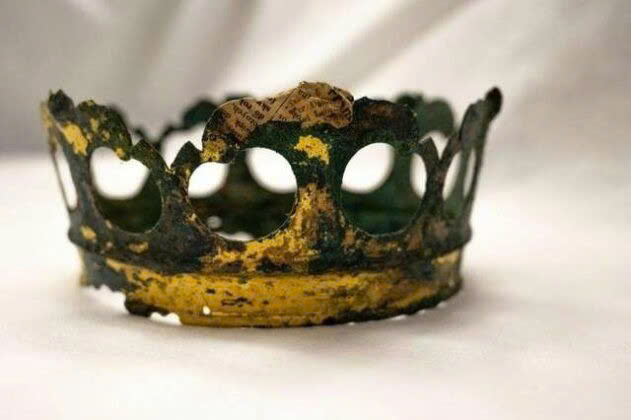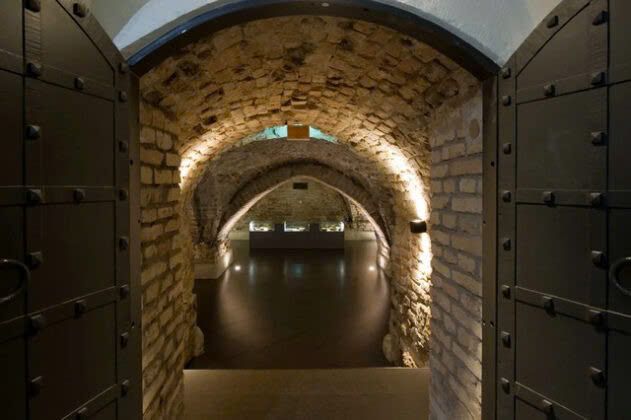Deep beneath the ancient stones of Vilnius Cathedral, a remarkable secret lay dormant for 85 years. In September 2024, archaeologists uncovered an extraordinary collection of royal burial artifacts, carefully concealed since the dark days of 1939 when World War II cast its shadow across Europe. These magnificent treasures, wrapped in yellowed newspapers from that fateful September, have finally returned to the light, offering an unprecedented glimpse into Lithuania’s regal past.
The Sacred Sanctuary: Lithuania’s Royal Resting Place
A Cathedral of Kings and Queens
Vilnius Cathedral stands as more than just a place of worship—it serves as the eternal home of Lithuania’s most distinguished rulers. For centuries, this sacred space has functioned as the Grand Duchy’s premier burial ground, where monarchs were laid to rest alongside their most precious regalia. The cathedral’s crypts became a treasure vault of history, preserving the legacy of Medieval European nobility through elaborate burial customs and ceremonial artifacts.

The Great Concealment of 1939
As Nazi forces advanced across Europe in September 1939, cathedral custodians faced an impossible choice. With war threatening to engulf Lithuania, these brave guardians made the courageous decision to hide the irreplaceable royal artifacts deep within the cathedral’s underground chambers. Their foresight would preserve these priceless relics through decades of occupation, conflict, and uncertainty.
Spectacular Royal Collections Revealed
The Crown of Alexander Jagiellon

Among the most significant discoveries is the burial crown of Alexander Jagiellon, who ruled as both King of Poland and Grand Duke of Lithuania from 1461 to 1506. This masterpiece of Medieval goldsmithing represents the pinnacle of royal craftsmanship, its intricate details speaking to the power and prestige of one of Lithuania’s most transformative leaders.
Elizabeth of Austria’s Royal Suite
The collection includes the complete burial regalia of Elizabeth of Austria, queen consort to Casimir IV Jagiellon. Born in 1436 and passing in 1505, her posthumous crown, ceremonial chain, ornate medallion, royal ring, and coffin inscription together form a stunning ensemble that exemplifies the sophisticated burial traditions of Medieval European royalty.

Barbara Radziwiłł’s Magnificent Legacy
Perhaps the most captivating discoveries belong to Barbara Radziwiłł, the cherished queen of Sigismund II Augustus. Her burial collection—featuring an elaborate crown, ceremonial scepter, royal orb, precious rings, and commemorative plaques—tells the story of a woman whose influence shaped Lithuanian history and whose memory lives on through these extraordinary artifacts.
Modern Discovery Methods Meet Ancient Mysteries
Technology Unlocks the Past
The successful recovery of these treasures represents a triumph of modern archaeological techniques. In September 2024, researchers employed cutting-edge endoscopic cameras to explore previously inaccessible areas of the cathedral’s crypt system. This innovative approach allowed them to locate and safely retrieve artifacts that had eluded discovery for nearly nine decades.

A Time Capsule Preserved
The discovery team found the artifacts exactly as they had been left in 1939, still wrapped in contemporary newspapers that served as both protection and historical timestamp. This remarkable preservation offers researchers unique insights into both the original concealment process and the artifacts’ remarkable journey through time.
Cultural Significance and National Pride
Symbols of Lithuanian Heritage

According to Vilnius Archbishop Gintaras Grušas, these recovered treasures represent far more than historical curiosities—they embody “the enduring legacy of Lithuanian sovereignty” and demonstrate Vilnius’s central role as the beating heart of the Grand Duchy of Lithuania. These artifacts serve as tangible links to a golden age of Lithuanian power and influence.
European Heritage Connections
The significance of these discoveries extends beyond Lithuania’s borders. Rita Pauliukevičiūtė, director of the Vilnius Church Heritage Museum, emphasizes that these treasures function as “markers of shared European heritage,” illustrating the interconnected nature of Medieval European culture and the artistic exchanges that shaped the continent’s royal traditions.
Future Plans: Sharing History with the World
Restoration and Conservation

The newly discovered artifacts are currently undergoing comprehensive restoration by expert conservators. This meticulous process will ensure these precious items remain intact for future generations while revealing details that may have been obscured by centuries of concealment.
Video
Public Exhibition

Once restoration is complete, these extraordinary treasures will find their permanent home at the Vilnius Church Heritage Museum. This public display will allow visitors from around the world to witness firsthand these remarkable symbols of Lithuanian and European royal heritage, making history accessible to all who wish to explore Lithuania’s magnificent past.
A Discovery That Rewrites History
The emergence of Vilnius Cathedral’s hidden royal treasures marks one of the most significant archaeological discoveries in recent Lithuanian history. These artifacts not only illuminate the sophisticated burial practices of Medieval Europe but also demonstrate the remarkable lengths to which people will go to preserve their cultural heritage during times of crisis.

As these ancient crowns, scepters, and royal insignia prepare to meet the modern world, they carry with them stories of power, love, loss, and resilience that continue to resonate today. Their rediscovery reminds us that history’s greatest treasures often lie hidden in plain sight, waiting for the right moment to reveal their secrets and enrich our understanding of the past.

